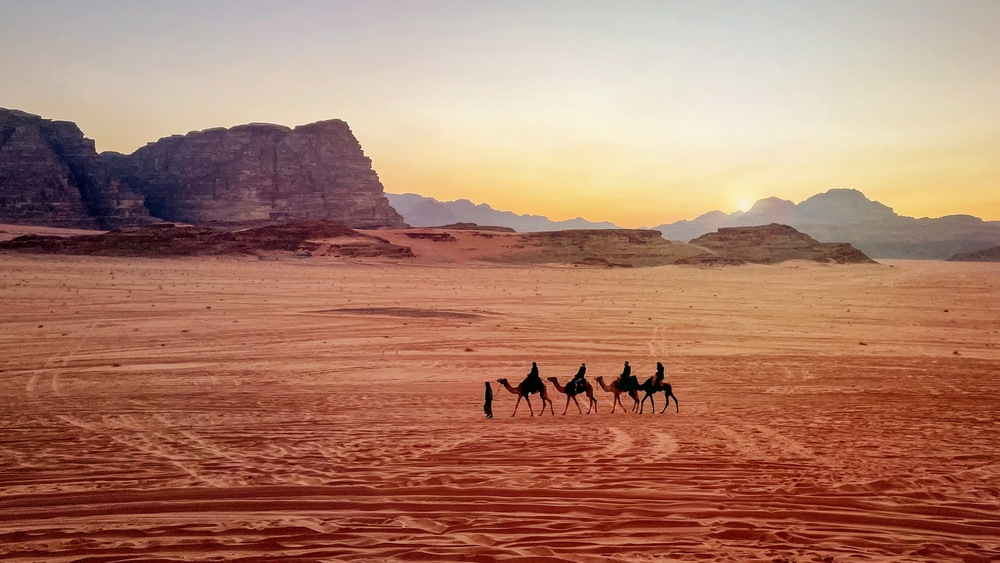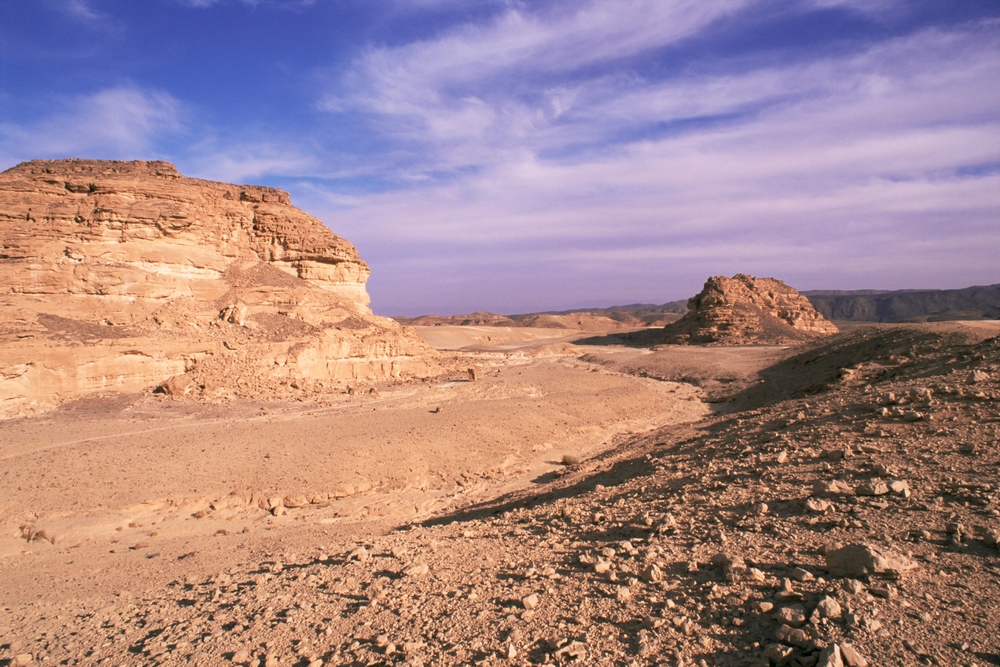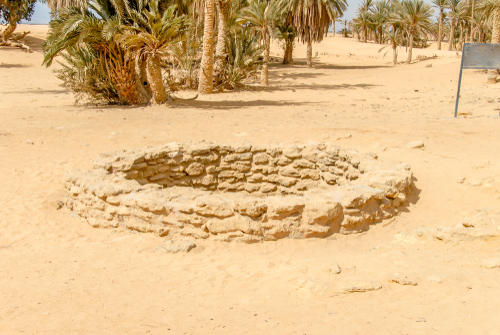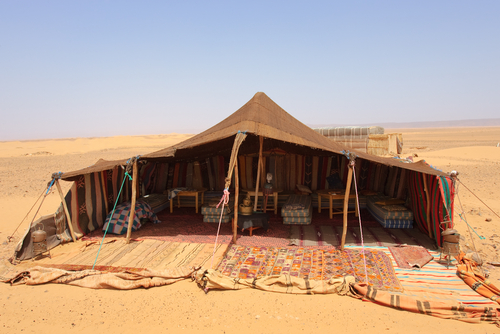Ancient Israel: Its Life and Institutions
Roland de Vaux
The Bible is not reliable for ethnographic information. This is especially true in regard to nomads’ and city dwellers’ institutions and worldview. Sheep-breeding tribes who are beginning to settle down were formerly camel-breeders who had begun to raise cattle so they are not comparable to the people of ancient Israel . However, the nomadic Arabs were closely related to the Israelites and are comparable in patterns of life and institutions. For this reason, the knowledge of pre-Islamic, modern and contemporary Arab life can help in understanding the primitive organization of Israel. Biblical parallels strengthen this comparison.
Forms of Nomadism

The True Bedouin
The true Bedouin (man of the desert) is a camel-breeder and can survive in regions where the annual rainfall is less than 4 inches. He has very little contact with settled people.
Nomads who Breed Sheep and Goats
Another type of nomad breeds only sheep and goats, which are not as hardy. The animals need to drink more often and can’t survive on the rough pasture suitable for the camels. They probably live in regions that get 4-10 inches of rainfall. They travel only on routes where they can manage the distance between watering holes and they have more contact with settled people.
Tribes who Raise Cattle
Tribes who raise cattle, on the other hand, are no longer true nomads. They settle in one place, cultivate the land and build houses. Some in this group may be half-nomad or half-settler living at least part of the year with their herds. Some hybrid forms may own land at the far ends of the migration route–worked by serf labor.
The Israelites
The Israelites never had camels and had no memory of life in the open desert. But Israel did have a memory of a nomadic or semi-nomadic life. When the Israelites came to settle down as a nation they still retained some characteristics of that way of life. Consequently, the nomadic life was influential in Old Testament institutions.

The Tribe
Because of the realities of survival in the desert, the unit of society is the tribe. A tribe is a group of families who believe they are descended from a common ancestor.
Tribal Surnames
The name or surname of that ancestor becomes the name of the tribe. The surname is sometimes, but not always, preceded by ‘sons of’. The Bible refers to the Hebrews as ‘Israel’, but also as the ‘sons of Israel’. The tribe of Judah is referred to as both Judah and the sons of Judah. Ammon, on the other hand, is usually called the ‘sons of Ammon’. A tribe’s name may also be preceded by ‘the house of’. Israel is sometimes called the house of Israel. The tribe of Joseph is sometimes the house of Joseph. Assyrian texts follow the same usage in references to Aramaic groups who lived in conditions similar to the first Israelites.
Tribal Law
The size of the tribe must be compact enough to be mobile, and strong enough to ensure its own safety. And a person must be able to count on a welcome from other groups if he or she is separated from his or her own group. Anyone may need this help and so everyone must give it. This is the basis of the law of hospitality and asylum.
The desert has no police force or court of justice. An individual’s responsibility for a crime belongs to the group as a whole. Likewise, the punishment includes all members of the group. This was the original form of the law of blood vengeance.
Blood vengeance often led to endless assassinations and family feuds.Therefore, the law was amended over time. Then when people settled down they established a judiciary system. But this didn’t end the practice of blood vengeance. Some tribes accepted monetary compensation. The Hebrews did not accept compensation because they believed it would pollute the land.
Kinship
The blood relationship that unites a people may be real or supposed. Every tribe has traditions about the ancestor from whom it claims descent. Kinship also explains the relationship between separate tribes. For a nomad, a genealogy describes the whole social organization of the desert. Each tribe descends from a single ancestor; two allied tribes descend from two ancestors who were brothers in the strict sense. However, when genealogies are extended in space and time they can become arbitrary and artificial. This leads to a tribe’s claiming ‘eponymous’ ancestors. An eponymous ancestor is the person or thing for whom or from which the tribe is named.
Genealogies
According to de Vaux, in the Mid-Euphrates region there is a group of small sheep-breeding tribes called the ‘Agedat’, or Confederates. Their name describes how they were formed. However, a genealogical table now describes their political and economic union.
Among the Arabs, there is a tribe that separated from the Azd at the time of the great Yemenite dispersion. The Khoza’a (Separated) became its name. But the genealogists have assigned a personal ancestor to the tribe, whom they call Khoza’a.
The Kholoj (Transport) received their name in a similar way. Omar I transferred them from the ‘Adwan to the Al-Harith. However, that is not the reason for their name. According to the genealogists, Kholoj is a surname of Qais, the son of Al-Harith.
Other factors can lead to the formation of a tribe. Sometimes families join together simply because they live in the same region. Or when stronger neighbors absorb weak elements. Alternatively, several smaller groups might combine in order to remain independent.
The Sheikh or elders can adopt newcomers or clans into a tribe. They become attached to the tribe in name and in blood. This means they acknowledge the tribe’s ancestors as their own and they will marry within the tribe. The Arabs say the individual or a clan is ‘genealogized’.
A text of Al-Bakri states:
And the Nahd ben Zaid joined the Benc al-Harith, became confederate with them and completely united with them; and the Jarin ben Rabban joined the Benc Zubaid, attached themselves to them and lived together, and the whole tribe with its confederates was attached to the same ancestor.
The Federation of Israel
Israel absorbed other tribes too. The twelve tribes were a federation. The tribe of Judah absorbed the remnants of the tribe of Simeon. Judah also incorporated foreign groups like the Calebites and Yerahmeclites. The Calebites were originally outside of the Israelite confederation, according to the Books of Numbers and Joshua. Caleb was the son of Yephunneh the Qenizite, (Numbers 32:12; Joshua 14:6,14). The Calebites had contact with Israel from the time of the sojourn at Qadesh. Caleb’s genealogy was eventually attached to Judah. He was named at Qadesh as Judah’s representative for the exploration of Canaan (Numbers 13:6).
The son of Yephunnch becomes the son of Hesron, son of Peres, son of Judah and brother of Yerahmeel, (I Chronicles 2:9, 18, 24) or another foreign group (I Samuel 27:10) attached to the line of Judah (I Chronicles 2:9). These fusions probably took place frequently.
If a tribe becomes too large, it may be forced to split up. But the groups retain a feeling of family solidarity and unite for common enterprises. This is the case with two federations of the Syrian desert, the ‘Anezeh and the Shammar. As for Israel, Abram and Lot separated, but when Lot was the prisoner of the four victorious kings, Abram went to his rescue. (Genesis 14: 12-16)
Territory
Tribal members owned the cultivated land in their territory privately. But the tribe owned pasture land in common. However, the territorial boundaries were not well-defined. This could lead to disputes, especially over the use of wells or cisterns.
Everyone was aware of the location of watering places and knew who their owners were, but sometimes quarrels would break out between shepherds. Abram’s herdsmen quarreled with Lot’s. (Genesis 13:7) Abimelek’s servants seize a well dug by Abraham. (Genesis 21:25). And Isaac struggled to maintain his rights over the wells he had dug between Gerar and Beersheba (Genesis 26: 19-22). Disputes were settled by war if the tribes couldn’t settle them peacefully.

The Law of Hospitality and Asylum
Hospitality was a necessity which became a virtue. The guest is sacred and the honor of providing for him is a matter of dispute. A stranger can enjoy such hospitality for three days, but even after he leaves he has right to protection for a given time. This time varies from tribe to tribe. For some tribes, it is ‘until the salt he has eaten has left his stomach’. In large tribes it might be for three more days and within a radius of 100 miles.
The Arabs consider a man who leaves or is expelled from his tribe, even for a serious offense, a dahil, or ‘jar’. This means ‘he who has come in’. According to the law of asylum, the tribe tries to protect him and even to avenge him if necessary. Two Old Testament institutions reflect these customs. One is the gear (the same word as the Arabic jar). The other is the cities of refuge. The Bible has examples of both institutions. Three ‘men’ visited Abraham at Mambre, and Abraham spared no expense to show them hospitality (Genesis 18:1-8). Also, Laban generously welcomed Abraham’s servant (Genesis 24:28-32).
Traces of the Nomadic Life in the Hebrew Language
The Hebrew language maintained several traces of the nomadic life long after the Israelites settled down. Generations after the conquest, a house was called a tent. This was true in poetry and in everyday speech. (Judges 19:9; 20:8; Isaiah 13:2; I Kings 8:66)
To express ‘leaving early in the morning’ there is a verb which means ‘to load the beasts of burden’ (Judges 19:9; Isaiah 17:20).
The cut tent-rope, the peg which is pulled out, or the tent itself being carried off, represents death. Broken ropes and the tent blown down represent desolation. Security is the tent with tight ropes and firm pegs. A nation whose numbers are increasing is a tent being extended.1

Mythology Among the Hebrews and its Historical Development
Ignác Goldziher and Heymann Steinthal
Goldziher begins by saying that there are two successive stages in the development of mankind: Nomadic and Agricultural.
“In the former commences the chain of development, which is closed by the formation of perfect true society. First are formed communities, which though still standing only on the base of the family, yet represent a broadening of this base insofar as the notion of the family is first enlarged into the institution of a tribe and then this institution cannot always refuse to take in foreign elements.”
The Nomadic Period in the Development of Mankind
Political division into tribes is an important characteristic of the nomadic period, but many civilized nations retain tribal divisions. The people have a “consciousness of belonging to one another”. Their names retain evidence of this heritage. This is evidence of their nomadic history.
“The Kirdic nomadic tribes still call themselves Kötsher, or wandering. The name of the Zulus means ‘homeless‘ or ‘roaming’. This is also the meaning of the name of the Zûzȋm, the Canaanite aborigines, as well as the Canaanite Perizzî.”
The Egyptians gave the name ‘Put’ to the many nomadic tribes that came into their country. The Egyptians also called them the ‘Runners’ and represented them in the hieroglyphs as a hare. The name of the Hebrews, Ibhrim, means the nomads, ‘for the word ‘ȃbhar means to pass through a land, or to cross a river, but also to wander about in general.’
The Nomad’s Search for Pasture and Water
“The nomad’s purpose in wandering is to find pasture for his herds– “green pastures beside still waters” (Psalms 23:2).” So the nomad sees cloudy skies as friendly. The fierce heat of the sun is experienced as an enemy. For this reason, cloudy heaven is personified in the myths of the nomads in the role of the conquerer. The nightly heaven defeated by the day is portrayed as a tragic figure and lamented. A nomad begins a journey in the afternoon and continues it during the night. If he travels at all by day it will be under the cover of clouds.
The Day Begins at Night
The Arabs tell the distance of a journey by the number of nights it will take to arrive at the destination.
“Between Damascus and the place where Walid b. Yazid lived in the desert are four nights.” (Kitab al-aghani)
It is this mode of counting time that holds to nomadic ideas long after a people have become agricultural. Julius Caesar said that the Gauls counted by nights, not by days. Tacitus said the same of the ancient Germans. For both Arabs and Hebrews, the day actually begins with evening.
In the Korân and in the poetry of the Bedawi there are allusions to the starry heaven. The caravan songs refer to night-traveling.
O how journey we, while dew is scattered out
and desert-dust bedecks the lips of sumpter beasts.
O how journey we, while townsmen sleep
With limbs involved in coverlets… (as quoted by Wetzstein)
Leave a Reply
You must be logged in to post a comment.